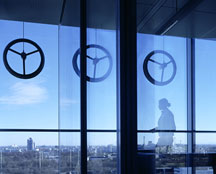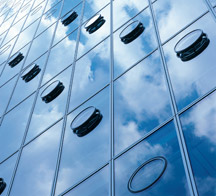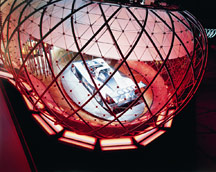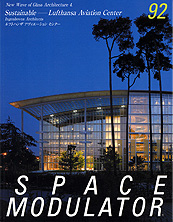About Glass

Uptown Munchen, Munich

Window for natural ventiration at the facade of a high-rise building (Uptown Munchen, Munich)

Audi Pavillion in Frankfurt, Tokyo, Detroit, Geneva, Paris
The development of glass brought "transparent architecture" into existence
Developments in glass have rapidly improved its quality and the ways in which it is used have become more varied. The unique characteristics of glass as an architectural material have been highly valued, so over the past decade many transparent architectures came into existence which were thought impossible only about two decades before. The glass products are sure to keep developing but the ingredients themselves cannot be altered. Conventionally, sunshades have been widely used to block the sun in the summer, but they present various maintenance problems, so "double skin facade systems" were created. Having glazed and transparent outer surfaces around the entire architecture would be a good solution to the problem, but design needs to be more complex. I would like glass to have sunshade functions, but this would require a chemical approach. I would also like the outer surface of architecture to generate or capture energy. One attempt at this is the use of solar cell systems.
Glass has a lot of potential. If it is not possible to embody several functions into one sheet of glass perhaps using a combination of different types of glass would be a solution. A building needs openings or windows for natural air ventilation. But I estimate that 95 percent of the outer surface could be covered with glass. So, choosing the right types of glass for the right place would be very important.
Ideal glass
I would like to use glass which can be controlled to let specific types of light in, using some kind of filter system. I would also like a glass with the capability to let the winter sunlight in but deflect summer sunlight. But, in any season, the outside scenery seen from inside the building should look the same as in the natural setting outside. As a material for the outer surfaces, glass needs to generate or capture energy as well. Therefore glass might become more intelligent.


